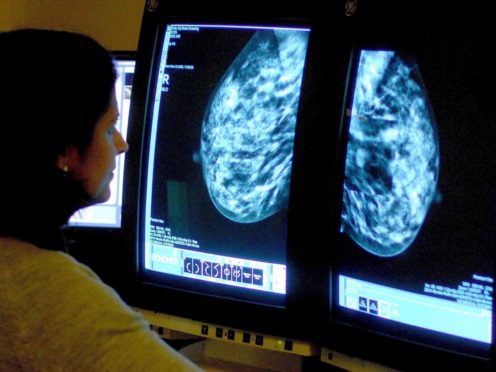Five-year survival for breast, prostate and bowel cancer has barely improved in the last decade, new figures suggest.
Data analysed by the Office for National Statistics (ONS) shows that survival for these key cancers, which are newly-diagnosed in more than 100,000 people in the UK every year, have remained fairly static over the last decade.
But other cancers, including lung, kidney and myeloma have all shown much bigger improvements in five-year survival.
The ONS found that breast cancer five-year survival was 83.6% for the years 2006-2010.
This rose slightly to 85.6% in the years 2009-2013, before dropping to 85% and then sticking at 85.3% in 2012-16.
Meanwhile, bowel cancer five-year survival in both men and women was 57.9% in 2006-2010, and stood at 59.1% in 2012-16.
Prostate cancer survival has also risen slightly, with five-year survival at 84.9% in 2006-2010, before reaching 87.1% in 2012-16.
Today’s report on cancer survival in England will be the first time we’ve looked at how different stages of the most common types of cancer can affect survival estimates over 5 years https://t.co/eN7p4Rpx9h
— ONS (@ONS) January 24, 2019
Macmillan Cancer support said it was “concerning to see that five-year survival rates for some of the most common cancers show little evidence of improvement in recent years”.
For kidney cancer, five-year survival showed relatively big improvements over the same time period, from 52.7% to 63.3%.
Lung cancer rose from 10.4% to 15.3% and myeloma rose from 42.5% to 51.7%.
The overall data for England also showed that the earlier a cancer is diagnosed, the higher the chance of survival.
People diagnosed with skin, prostate or breast cancer in the earliest stages – stage 1 – have the same chance of being alive after a year as the general population.
Lung cancer 1- and 5-year net-survival estimates have increased significantly for men and women https://t.co/eN7p4Rpx9h pic.twitter.com/ucTXFXhztU
— ONS (@ONS) January 24, 2019
However, those who are diagnosed with stage 4 cancer – where the disease has spread to at least one other organ – are much more likely to have a bleak outlook.
Pancreatic cancer had the lowest survival estimate after one year for men (23.7%) and women (25.3%) and the lowest survival estimate after five years in both men (6.4%) and women (7.5%).
Melanoma of the skin had the highest net-survival estimate for one-year survival in both men (97.4%) and women (98.6%) and for five-year survival in both men (89.2%) and women (93.9%).
Sarah Caul, head of cancer analysis at the ONS, said: “In general, we have seen an increase in people’s chances of survival across different types of cancer since our estimates for 2006-2010.”
She added: “This is the first time we have been able to look at this in more detail to examine how estimates for survival can change depending on what stage the disease is at when diagnosed.
“This research shows a mixed picture but does stress the need for awareness and early diagnosis.”
Dr Fran Woodard, executive director of policy and impact at Macmillan Cancer Support, said: “These new figures show a mixed picture for people with cancer in England.
“It’s concerning to see that five-year survival rates for some of the most common cancers show little evidence of improvement in recent years.
“We were encouraged to see the emphasis on improvements in cancer care in the recent long term plan for the NHS in England, and today’s news shows the scale of the challenge and the urgent need for a fully-funded workforce strategy to meet the ambition of getting cancer outcomes here to be the best in the world.”
